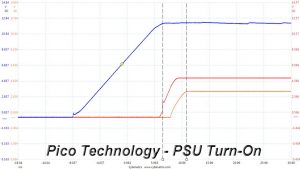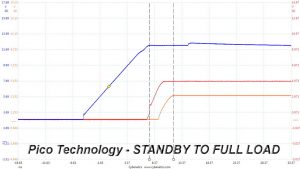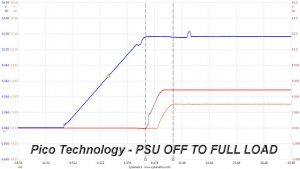Protection Features
Our protection features evaluation methodology is described in detail here.
|
Protection |
|
|
OCP |
12V: 99A (0.99%), 11.999V |
|
OPP |
1259.722W (104.97%) |
|
OTP |
✓ (185°C @ 12V Heat Sink) |
|
SCP |
12V: ✓ |
|
PWR_OK |
Does not function correctly |
|
NLO |
✓ |
|
SIP |
Surge: MOV |
After many tries we were able to draw close to 100 Amps from the +12V rail, before the unit shuts down. Riotoro say we should be able to draw 100 Amps on this rail, so we cannot say that we are left satisfied by the result. For a strange reason this rail's OCP is wrongly configured although the +12V FETs can easily cope with much higher loads.
The minor rails are able to deliver more watts than their nominal ratings, while the over power protection's triggering point is very close to the unit's max rated capacity. As it seems High Power wanted to stay on the (extra) safe side, it was very conservative with this platform's major protection features.
The over temperature protection is present and operates properly, though the power ok signal is not accurate, which is a great shame for a product like this priced at £180
DC Power Sequencing
According to Intel’s most recent Power Supply Design Guide (revision 1.4) the +12V and 5V voltages must be equal or greater than the 3.3V rail’s output at all times, during the power-up and normal operation. For our first measurement, we turn the unit off and switch it back on without any load in any of the rails.
In the second test, we set the PSU to standby mode, dial full load and start it afterwards. In the last test, while the power supply is completely switched off (we cut off the power or switch the supply off through its power switch), we dial full load before restoring power.
The 3.3V rail's voltage is always lower than the rest two rails, as the ATX spec demands.
 KitGuru KitGuru.net – Tech News | Hardware News | Hardware Reviews | IOS | Mobile | Gaming | Graphics Cards
KitGuru KitGuru.net – Tech News | Hardware News | Hardware Reviews | IOS | Mobile | Gaming | Graphics Cards





